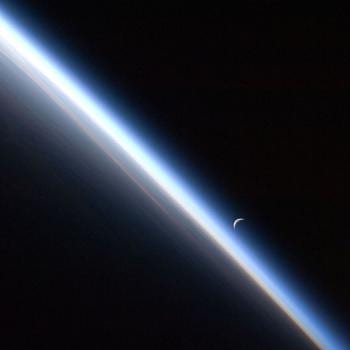
I posted an item the other day entitled “Some preliminary notes on fine-tuning and the ‘four fundamental forces’.” In it, among other things, I noted that
- If the electromagnetic force were slightly stronger or weaker, atomic bonds could not form — which would mean that molecules could not form.
- If the value of the gravitational constant were slightly larger, stars would become too hot and would burn out too quickly. If it were smaller, stars would never burn at all and heavy elements would not be produced.
But let me try to start putting some flesh on those bare bones, testing along the way to see whether I’m getting things right:
As I understand it, the ratio of the electromagnetic force to gravity must be balanced to a degree of one part in 1040 for a habitable universe to result. If this value were to be increased even slightly — one part in 1040 is a number that is far below submicroscopically small (1040 = 10,000,000,000,000,000,000,000,000,000,000,000,000,000), all stars would be at least 40% more massive than is our sun. Stellar fusion, in this case, would be completed too quickly and would be too uneven to support complex life. On the other hand, if this ratio were to be decreased even slightly (by one part in 1040), all stars would be at least 20% less massive than the sun. This would evidently render them incapable of producing heavy elements.
Why does that matter? Heavy elements, it seems, are essential to the formation of planets:
“Heavy Elements Key for Planet Formation, Study Suggests”
And planets, it would seem fairly obvious, are essential to the emergence of life.
But immediately after the Big Bang, before the first stars ever formed, the universe consisted of hydrogen and helium and essentially nothing else. Stars were needed in order to create the heavier elements on which planets and our lives depend.
Let me stress again the vastness of a figure such as 1040, and, thus, the incredible smallness of “one part in 1040.” For comparative purposes, we might ask how many stars there are in the visible universe — by which I don’t mean in the night sky, but in the entire universe as it’s observable via our most powerful astronomical instruments. One estimate that I’ve found puts that number at 1021, which is far, far smaller than 1040. Okay. How about the number of grains of sand on our planet? I’ve located an estimate that, if you could count all of the grains of sand in all the deserts and on all the beaches of the earth, you would come up with something in the vicinity of 7.5×1018. Again, that’s very much smaller than 1040.












